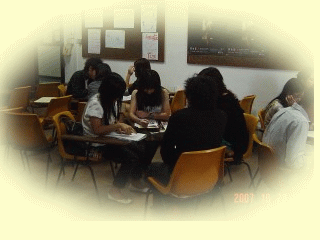Understanding & Guiding Whole-person Development

Home > Contents > Session Five
Session Five: Self-concept
and self esteem
What do we know about adolescents' self and inter-personal development in the Hong Kong Chinese context?
- Understanding adolescentsˇ¦ personal and social development of adolescents
- The nature of self-concept and its relationship to students' academic achievement and social development.
- Understanding how teachers can influence the self-esteem of their students in the classroom.
- Acquiring the skills for enhancing students' self-esteem through the use of some practical strategies and activities.

Learning Outcomes
At end of the session, the participants will be able to:
1. Refer to theories and concepts while dealing with school-related adolescent problems
2. Evaluate the threats of the school performance that adolescents encounter
3. Comprehend the nature of self-concept and its relationship to students' academic achievement and personal and social
development
4. State the physical changes (in terms of puberty, nutrition and body image) that adolescents experience
5. Comprehend the cognitive changes that adolescents experience
6. Understand how teachers can influence the self-esteem of their students in the classroom
7. Acquire the skills of enhancing students' self-esteem through the use of some practical strategies and activities
8. Suggest appropriate strategies to enhance students' confidence in applying life skills in career and talent development
9. Apply theories and give sufficient rationales for any intervention plan
10. Develop different skills (e.g. communication, helping, critical thinking and problem-solving skills) to tackle novel
situations and ill-defined problems
|
Task:
Understanding self-esteem (see
above)
Example: (The task below is just selected from those tasks assigned in the Learning Guides.)
In the eighth session, there will be an opportunity role play the use of rational emotive counseling with the following case.
In the present, please focus on understanding Tom's behaviour from the perspective of self-esteem.
Tom was a student in S.2 in a school that emphasized heavily on academic achievement. Most of the students in the school
were of average ability. Tom's parents contacted Mr./Ms. Tsang, the class-teacher and Chinese teacher, for help. Tom's
parents considered that Tom did not have any goals in life; he simply wasted time at home playing electronic games and
did not care about study. Mr./Ms. Tsang interviewed Tom. Among other things, Tom revealed that he was a member of the
school basketball team in P.6. He wanted to join the basketball team in this school. However, the secondary school basketball
team coach, Mr. Chu, did not think he was suitable for playing in the team so he was never chosen. He believed that Mr. Chu
was not fair to him and he would not have any chance to play in sports in this school. He was also angry with his classmates
and isolated himself from them. In the classroom, Tom seemed to be sleepy and withdrawn from learning activities.
|
a. What are Tom's strengths and weaknesses?
b. If you are Tom, how would you describe yourself? Are there any differences between your descriptions compared with
other's descriptions?
c. How do you comment about Tom's self-esteem? Do you think
self-esteem is important for Tom? Why?
d. As Tom's class-teacher, how would you help Tom develop positive
self-esteem?
References (see above)
Further readings and resources:
- Battle, J. (1989). Enhancing self-esteem
and achievement. Alberta: James Battles and Associates.
- Battle, J. (1990). 9 to 19: Crucial
years for self-esteem in children and youth. (Chapter 2, 5 & 6).
Edmonton, Alta.: James Battles and Associates.
- Baumeister, R. F. (Ed.) (1993).
Self-esteem: The puzzle of low self-regard. NY: Plenum Press.

![]()
